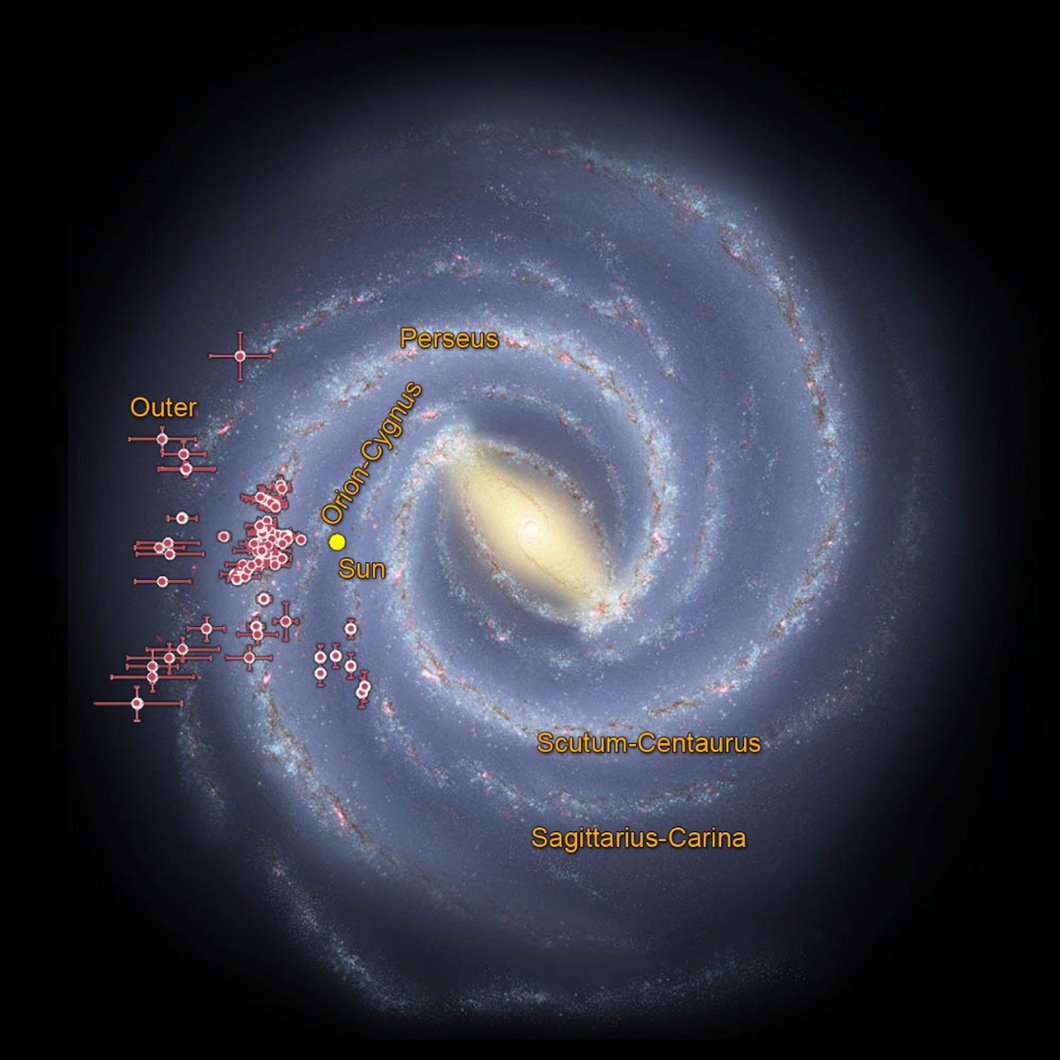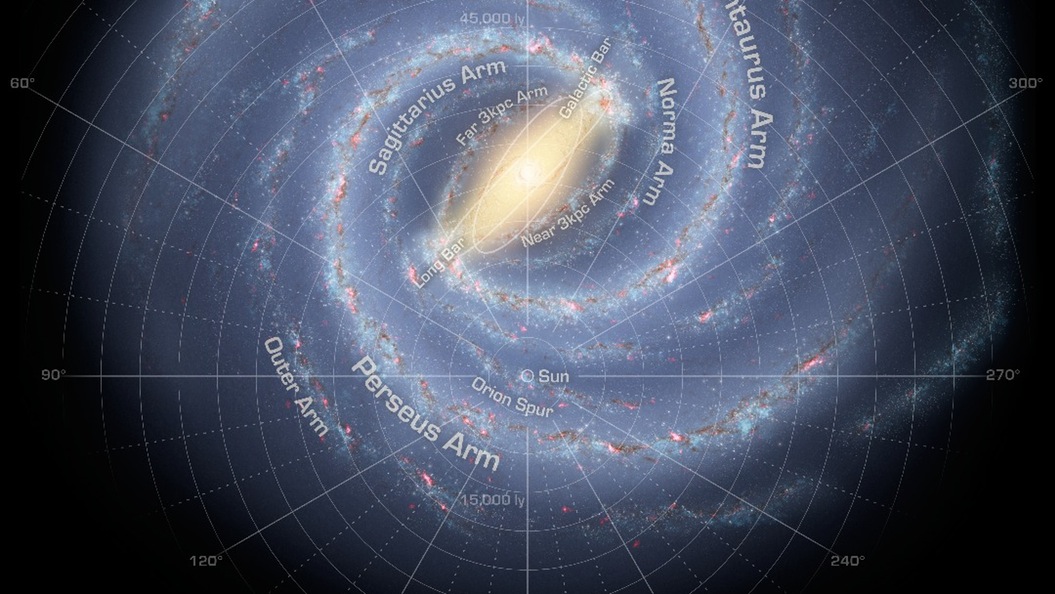Results from a new technique designed to map the structure of the
Milky Way appear to support the four spiral arm model of our galaxy.
A team of researchers from the Federal University of Rio Grande do
Sul, Brazil, used data collected by NASA's Wide-field Infrared
Survey Explorer (WISE) spacecraft to pinpoint star clusters located
in the resource rich environment of the spiral arms, and use them as
markers to trace the structure of our galaxy.
The problem we face when attempting to map our galaxy revolves around location. Earth sits roughly two thirds out from the galactic center, surrounded by seemingly chaotic yet structured clouds of dense dust that work to obscure our view, and hamper our efforts to gain an in-depth understanding of the large scale structure of our galaxy.
Researchers have, to an extent, been able to work around this impediment using a variety of differing observational techniques paired with insight gained from studies of distant spiral galaxies, in order to develop a basic model of our galaxy. Unfortunately the techniques used up to this point have left this model riddled with blank spots, but here is a brief outline of our galaxy as it is currently understood.
The Milky Way is a barred spiral galaxy, and at the heart of this leviathan structure (it is believed) lurks a supermassive black hole known as Sagittarius A* (Sgr A*), with a mass of around 4 million times that of our Sun. Surrounding Sgr A* is a bar-shaped core region, and from this focal point extend four spiral arms that harbor vast quantities of dust and gas, the key ingredients for creating a new generation of stars.
"Spiral arms are like traffic jams in that the gas and stars crowd together and move more slowly in the arms" states Denilso Camargo, lead author of the paper from the Federal University of Rio Grande do Sul, Brazil. " As material passes through the dense spiral arms, it is compressed and this triggers more star formation."

NASA image displaying the location of young star clusters pinpointed from data collected by NASA's WISE spacecraft
The four spiral arms that make up the Milky Way are known as the Perseus, Sagittarius, Scutum-Centaurus, and Outer arms. Our Sun is located in the Orion Spur, an offshoot of the Perseus spiral arm.
Recently, scientists have turned to infrared data collected from NASA's WISE telescope in order to more precisely map the positions of these arms, updating our view of the galaxy in which we reside. WISE, now re-designated as NEOWISE, has the ability to pierce the dense veils of dust that would otherwise obscure our view, allowing researchers to observe star nurseries embedded in the resource rich spiral arms of the Milky Way.
These nurseries give birth to clusters of stars that represent the ideal markers for tracing the position of spiral arms, as the relatively young groups of stars have not yet had the time to drift away from the region in which they were created. During its operational period as WISE, the telescope scanned the entire sky, granting researchers vast quantities of data to further hone their model of the Milky Way. To date, researchers have discovered around 400 dust-shrouded star clusters in the WISE data.
The researchers then compared the data from WISE with data from the Two Micron All Sky Survey (2MASS) in order to more accurately determine the distance, and therefore position, of the clusters. The researchers discovered that the positions of these markers strengthened the prevailing model of the Milky Way, which asserts that our solar system is located in a barred spiral galaxy with four spiral arms.
A paper outlining the research is available online at the Monthly Notices of the Royal Astronomical Society.
Source: NASA
http://www.gizmag.com/study-supports-current-milky-way-structure-model/39581
